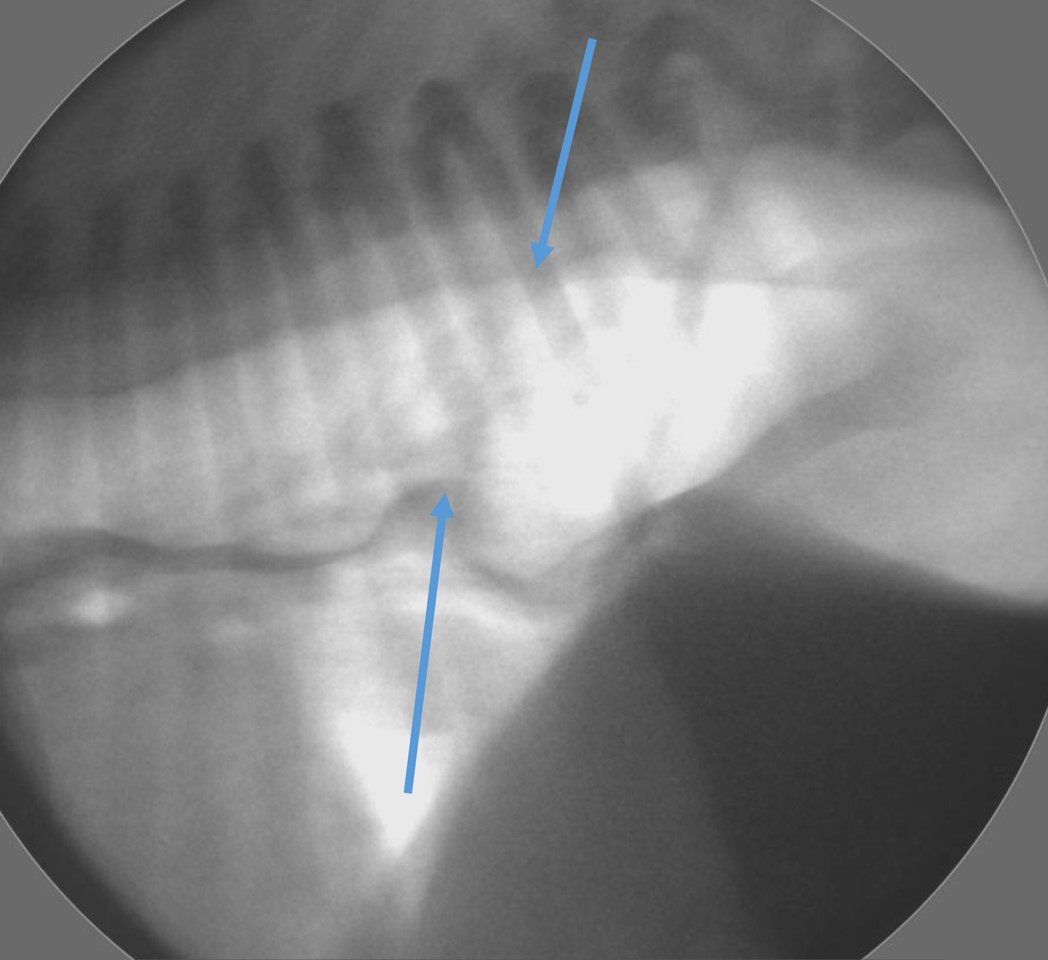Willows is one of Europe’s leading small animal referral centres. Our state-of-the-art hospital is led by internationally renowned Specialists, committed to providing the highest standards of veterinary care. The diagnosis and surgical management of hiatal hernia require specific diagnostic and surgical expertise respectively. At Willows we have a team Specialist Diagnostic Imagers and Soft Tissue Surgeons who are best placed to diagnose and manage this complex condition.
Our team of Surgeons are supported by our multi-disciplinary team of Specialists across a number of disciplines including; Anaesthesia, Internal Medicine and Emergency and Critical Care. Willows also has a large dedicated team of Vets, Nurses and clinical support staff available 24 hours a day, every day of the year to provide the best possible care for your pet.
WhyShould I Bring my Pet to Willows for Management of Hiatal Hernia?
What is a Hiatal Hernia?
A hiatal hernia is the abnormal passage of part of the stomach from its normal position in the abdomen in to the chest. The diaphragm is a sheet of muscle which separates the chest and abdomen. The oesophagus (food pipe) and major blood vessels and nerves pass through the diaphragm via small openings within the muscle. As a puppy develops and grows, these openings may be excessively large, allowing organs which should remain in the abdomen to pass in to the chest. The stomach can become permanently displaced but more commonly slides back and forth between the abdomen and the chest.
A Hiatal Hernia is most commonly seen in English Bulldogs. Brachycephalic dogs (those with a shortened nose such as English Bulldogs, French Bulldogs and Pugs) are at an increased risk of displacement of the stomach in to the chest as the negative pressures within the chest created by their abnormal airway, act to ‘suck’ the stomach through the opening in the diaphragm.
What are the Signs of Hiatal Hernia?
Dogs with hiatal hernia frequently vomit or regurgitate (passive reflux of stomach contents) due to the abnormal position of the stomach. These signs most commonly occur during peak activity or when the dog becomes excited. Reflux of acidic stomach contents in to the food pipe results in inflammation (reflux oesophagitis) which can trigger a self-perpetuating cycle of regurgitation and/ or vomiting.
Other symptoms which may be observed include excessive salivation, poor appetite and weight loss. Vomiting and/ or regurgitation of stomach contents can result in inhalation of this material and the development of secondary pneumonia. In this situation symptoms such as a cough, nasal discharge and breathing difficulties will be observed.

How is a Hiatal Hernia Diagnosed?
Lorem ipsum dolor sit amet, consectetur adipiscing elit. Nam bibendum consectetur ligula. Sed pretium risus eu lorem molestie laoreet. Phasellus pretium eros vel lectus pellentesque, vitae tempor est imperdiet. Praesent tempus nulla mauris, eget sodales eros blandit nec. Pellentesque non nibh vel urna porttitor bibendum nec eu nibh.

What are the Treatments Available for Hiatal Hernia?
The management of hiatal hernia can be broadly divided in to medical and surgical options.
Medical management consists of the use of medication to reduce inflammation within the oesophagus (antacids) and aid motility of the gastrointestinal tract. Medication often reduces the severity and frequency of the symptoms but is unlikely to eliminate them completely due to the persistently abnormal position of the stomach.
As a result, surgical management is commonly advised with the aim of eliminating the symptoms completely. Surgery consists of reducing the size of the overly large opening in the diaphragm and stitching the oesophagus and stomach permanently in a normal positon. These techniques prevent movement of the stomach in to the chest.
What can I Expect if my Pet is Treated for Hiatal Hernia?
The outlook following surgery is good. The aim is to eliminate the symptoms (regurgitation and vomiting) completely. Rarely, dogs may continue to regurgitate and/or vomit after surgery although with a markedly reduced frequency compared to before surgery. If this is the case, these mild symptoms can usually be controlled with the use of medication.
Post-operative Care:
Specific instructions relating to the type of exercise restriction required after surgery will be provided on an individual basis, however usually four weeks of exercise restriction is necessary following surgery to allow the internal surgical sites to heal. Exercise restriction typically consists of confinement to a pet crate or small room in the house with no furniture to jump on and brief lead walks for toilet purposes only.
Long term Management:
There is the potential for medication to be required in the medium to long term depending on the response to surgery.
To save this page as a PDF, click the button and make sure “Save as PDF” is selected.
Soft Tissue Surgery
Find out more
To assist owners in understanding more about Soft Tissue Surgery we have put together a range of information sheets to talk you through the some of the more common soft tissue conditions seen and treated by our Specialists.
Condition:
Treatment:

